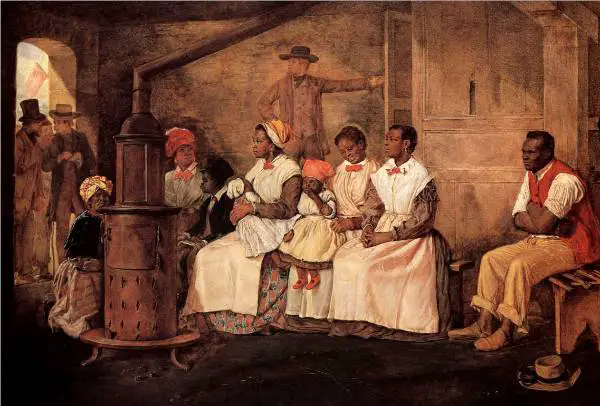Slave Children
It’s estimated that between the 16th and 18th centuries slave traders brought around twelve million Africans to the New World that we now know as America.
These people were brought as slaves and many didn’t survive the journey by ship. The demand for slaves increased because a slave only had an average life span of 5-7 years.
It’s believed that around one quarter of the slaves that were captured and shipped were children.
- A majority of the children that were placed into slavery were the results of being prisoners of war. Those that bought slaves usually followed various military groups and sat in waiting for the fighting to end so they could barter for slaves. Other areas of Africa saw child kidnapping as a way to get slaves. The kids would be taken from anywhere including the fields where they worked or if they were out of the view of their parents. During economic hard times and drought some families would sell their children into slavery. This was especially true if their kids had bad health, were special needs, or they were viewed as being evil.
- As with other slaves, children were often sold multiple times. While most traveled in ships with other slaves, there were some that remained in Africa as slaves. The merchants that sold the slaves would take their clothes and sometimes brand them with their brand on the back or on their chest. This was to indicate that they were commercial property of the merchant.
- The slave traders thought of a child as anyone below 4’4” in height. These kids were allowed to run around on the deck as were the women. Those that weren’t below deck usually got better treatment including clothes and food. Some of the sailors would teach them how to play games. The taller kids were put below deck with the adults where the conditioned were unsanitary and horrible. All kids were punished if they cried or didn’t eat.
- While there might have been a bit of better treatment for the children, almost all suffered along with the adult slaves as they traveled. The improved treatment offered a better survival rate but they were punished if they didn’t obey. It’s important to remember that the average time that they would be on the ships was from 1-3 months. Children had a high death rate due to illnesses and disease. In many cases children that were sick were thrown overboard so that the disease didn’t spread.
- As slavery became a way of life for the wealthiest of Americans, they began to value children as a part of their profit. They encouraged their slaves to marry and have children and would often split families up and sell them to multiple owners. This concept was known as “plantocracy.”
- It’s estimated that from 1820-1860 30% of the children born as slaves were sold from one area of the south to the Deep South. That area had harsher weather conditions, and kids often did the smaller duties such as washing and cooking. Their value was in the fact that they also received smaller rations than the adult slaves. The problem with this attitude was that these children were also more susceptible to disease and illness. This created a never ending cycle of bringing more and more children to the area.

Slaves Waiting for Sale: Richmond, Virginia
Q&A:
What is it called when the slave owners encouraged Black adult slaves to marry and have a lot of children?
Plantocracy
What was the average life span of an adult slave in the 1800s?
5-7 years
How did the traders and merchants get child slaves?
Results of war, kidnapping, being sold by their parents
What was the height measurement to determine if a slave was a child or an adult?
4’4”
What was the children treated onboard a slave ship?
Better clothes and food; allowed to be on deck
What percentage of slave children were sold from one area of the south to another southern area?
30%



